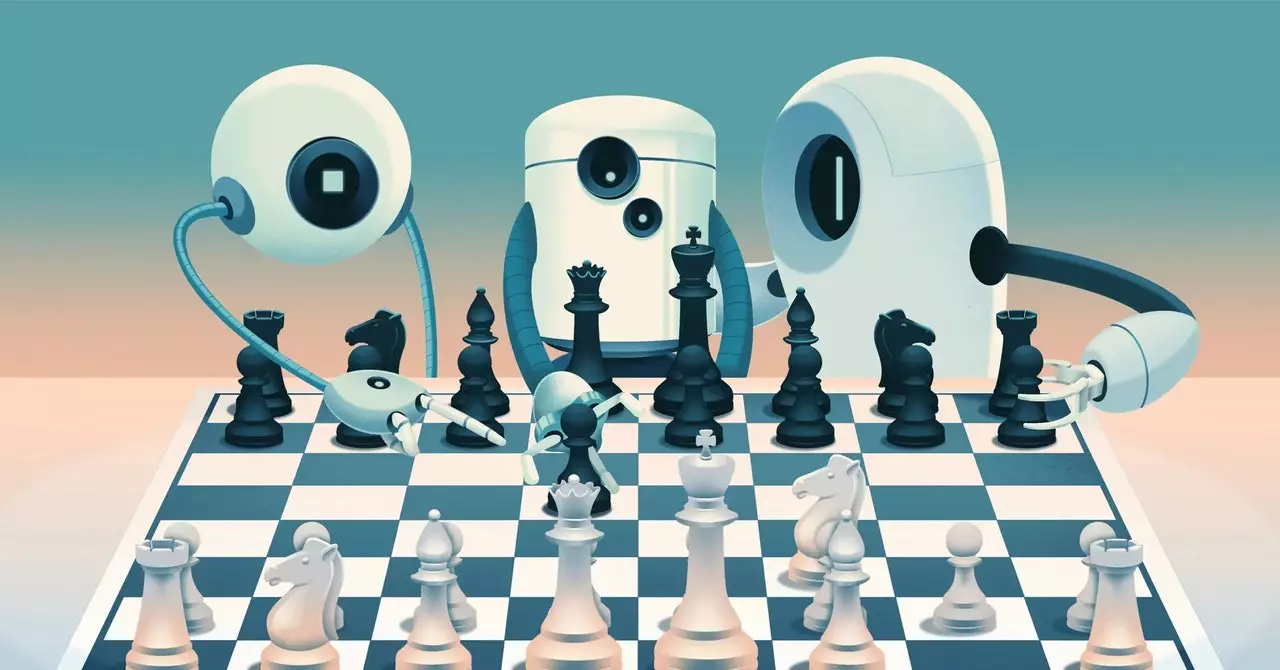When a group of researchers set out to improve the capabilities of AlphaZero, they introduced a new approach that emphasized diversity within the AI system. By incorporating multiple independently trained AI agents and rewarding the system for utilizing a wide range of strategies, they aimed to enhance the overall performance of the algorithm.
This new, diversified version of AlphaZero exhibited a remarkable level of creativity when faced with different scenarios. It explored new openings, made unconventional yet effective decisions, and consistently outperformed the original AlphaZero in matches. The team observed that the diversified AI player was able to solve twice as many challenge puzzles and demonstrate a deeper understanding of complex strategies.
The concept of creative diversity in AI systems goes beyond chess and has implications for various domains. By exposing the diversified AlphaZero to a diverse range of games, the researchers were able to broaden its problem-solving capabilities. The system learned to adapt and innovate in sticky situations by drawing on a rich repository of strategies and approaches.
This diversified approach can be applied to a wide range of AI systems, not limited to those based on reinforcement learning. By encouraging diversity in training methods, researchers can enhance the adaptability and efficiency of AI systems in different tasks. Whether it’s training physical systems, identifying drug candidates, or developing stock-trading strategies, diversity can lead to the discovery of novel and effective solutions.
The key takeaway from this research is the importance of considering a wide array of options to foster creativity in AI systems. By encouraging AI agents to explore diverse strategies and solutions, researchers can cultivate a more innovative and effective approach to problem-solving. This diverse thinking not only enhances the performance of AI systems but also opens up new possibilities for tackling complex challenges.
In essence, creativity in AI systems may be linked to the ability to think expansively and consider a broad spectrum of solutions. By rewarding diverse strategies and fostering a culture of exploration, AI systems can become more versatile and adaptable in responding to a myriad of problems. The computational power of AI can be harnessed to emulate human-like creative thinking and push the boundaries of what is possible in machine learning.
While the diversified approach shows promise in enhancing the performance of AI systems, there are still challenges to overcome. The computational cost of considering a wide range of possibilities remains a limitation, and researchers continue to explore ways to optimize and streamline the process. Additionally, there is room for further innovation and discovery in diversifying AI systems to explore an even broader spectrum of solutions.
The power of diversity in AI systems lies in its ability to unlock creative potential, expand problem-solving capabilities, and foster a culture of innovation. By embracing a diverse range of strategies and solutions, AI systems can push the boundaries of what is possible and open up new avenues for exploration and discovery. As researchers continue to explore the implications of diversity in AI systems, the potential for creative problem-solving in artificial intelligence remains a promising and exciting frontier.


Leave a Reply